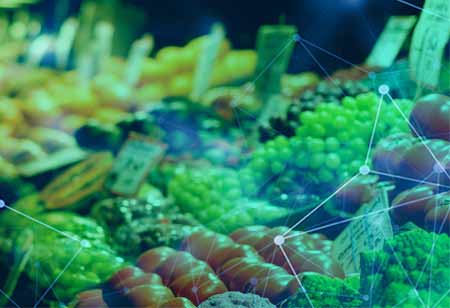Thank you for Subscribing to Food Business Review Weekly Brief
- Home
- Topics
- Alternative Proteins and Plant Based Food
- Beer and Wine
- Canned Beverages
- Coffee And Tea
- Food and Beverage Consulting
- Food and Beverage Financial Service
- Food And Beverages Marketing
- Food Distributors
- Food Ingredients
- Food Sustainability
- Plant Based Food and Beverages
- Seafood Suppliers
- Supplement Manufacturing
- Wine Investment
- News
- Vendor Viewpoint
- CXO Insights
- Conferences
- Newsletter
- CXO Awards
-
Development of Human Attributes By The Robots in Food Industry.
According to multiple surveys on the marketplace, it is predicted that food robotics will grow into more than a $3 billion industry.

By
Food Business Review | Saturday, February 26, 2022
Stay ahead of the industry with exclusive feature stories on the top companies, expert insights and the latest news delivered straight to your inbox. Subscribe today.

Robots in the food industry can boost productivity, enhance product quality and stability, and narrow down production costs. It also acts as a medium to support and promote traditional cuisines in foreign countries.
FREMONT, CA: According to multiple surveys on the marketplace, it is predicted that food robotics will grow into more than a $3 billion industry. The workforce shortage, automation, and innovative developments extend the idea of work a robot can perform. Scientists and other creative companies have been actively working to develop robots having advanced sensory systems.
Following are a few futuristic features of the sensory robots that are being implemented now and will soon be seen dominating the food industry.
• It is a vision developed as the first sensory system for robots with the most sophisticated and valuable benefits. Images of robots are being used to inspect the food quality grading and other ingredient evaluations. Meantime, robots can distinguish between the quality attributes of the food, such as staining of produce, to determine the quality threshold satisfaction.
Robots can also identify foreign material contaminants in the final food products, like plastic and metal. They can create 3D models of meat carcasses and cut them effectively without any wastage of the edibles. Finally, robots can interpret the bar codes, recognize mislabeled products, and arrange packaged products.
• About the next feature, odor, which has specific patterns, is being detected by the robot noses, surpassing the human ability to distinguish them. Many bio-nano tech startups are evolving an e-nose, which will be rapidly able to sniff out the pathogens, quickly make out contamination, and suspend food poisoning.
• New-age robots are turning to taste a portion of food. Different companies and teams are working on an AI tongue that pulls inspiration from humans' taste buds and will be capable of identifying complicated liquids. It required less time, sensors, and an app to determine the chemical composition and place it on cross-referencing. AI-powered taste-testing robots can determine the quality and authenticity of mass-produced food.
• Robots will hear and process voices for a long now. Then, future designs are predicted to have features that can detect sounds other than the human voice. These systems can be used in performing rescue activities and other agents that might require attention.






